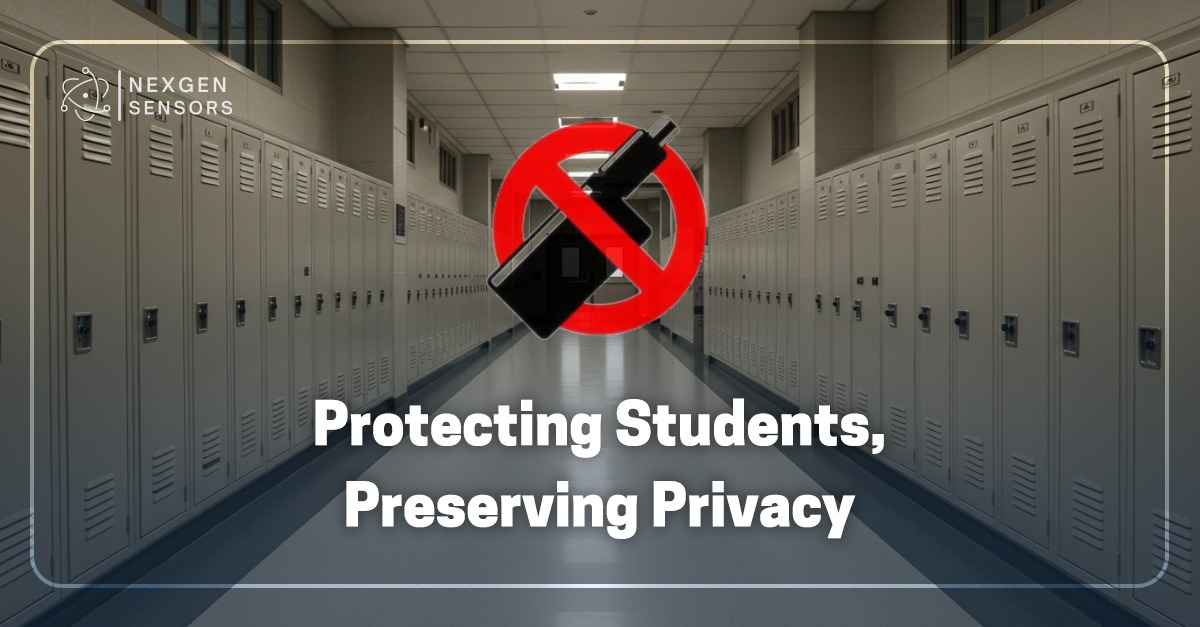
Menu

Across the country, school leaders are facing an issue that is as new as it is urgent: vaping. It has quickly moved from being an occasional disciplinary matter to a daily health and safety concern. Administrators, facilities managers, and IT teams alike are trying to answer the same question:
How do we stop vaping in sensitive areas of a school without installing surveillance that undermines trust?
For years, the available options have been limited. Smoke alarms do not work for vapor. Traditional motion sensors can’t distinguish between normal activity and vaping. Cameras and microphones are not an acceptable solution in restrooms, locker rooms, or dormitories. Schools have been left with a frustrating choice: ignore the problem, or adopt invasive technology.
At NexGen Sensors, we believe that is a false choice. Safety and privacy should never be mutually exclusive. That conviction is what led us to develop our vape detection solution.
Unlike older systems, our detector does not rely on cameras, microphones, or basic motion sensors. It uses a combination of advanced environmental and thermal data to identify the subtle signs of vaping activity. By monitoring changes in heat, humidity, and the presence of occupants, our detector can quietly and accurately alert staff to vaping incidents in real time. Because it does not capture images or audio, it protects the privacy of the students it is designed to safeguard.
This approach offers several key advantages for schools. First, it reduces false alarms, which means staff can respond quickly and confidently when a real incident occurs. Second, it integrates seamlessly with existing building management systems, making it easy to implement without major infrastructure changes. Third, it is designed specifically for environments where cameras are inappropriate, allowing schools to maintain a culture of trust while still enforcing rules and protecting health.
Implementing a privacy‑first vape detection system also sends an important message to parents and the wider community. It shows that the school is committed not only to student safety but also to respecting student rights. In an era when concerns about surveillance and data security are rising, that matters more than ever.
As we move into a new school year, vaping will continue to be one of the most pressing safety challenges for educators. Schools that act now will be better positioned to protect student health, reassure parents, and support staff. With the right technology, you do not have to choose between safety and privacy. You can have both.
NexGen Sensors works with schools, universities, and facility managers to implement discreet, effective vape detection systems that respect privacy while delivering results. If you are exploring options for your campus, we invite you to learn more about how our technology can help you address vaping without resorting to intrusive measures.
Learn more about our privacy‑first vape detection solution here: https://nexgensensors.com/rs485-thermal-occupancy-multi-sensor

Get the latest updates and exclusive offers by subscribing to our newsletter!
Email: info@nexgensensors.io